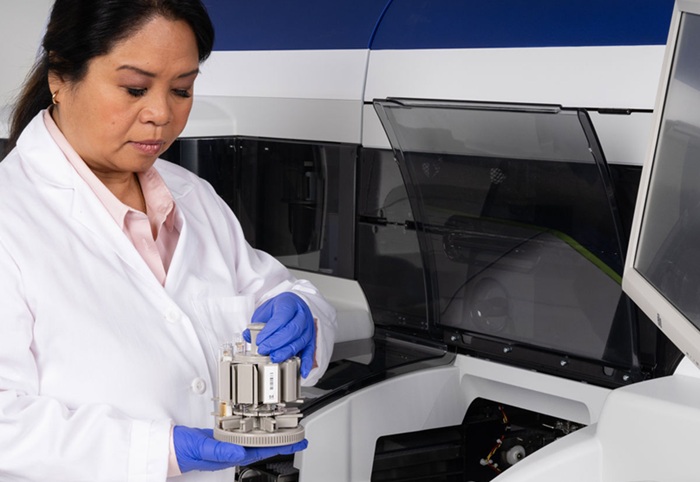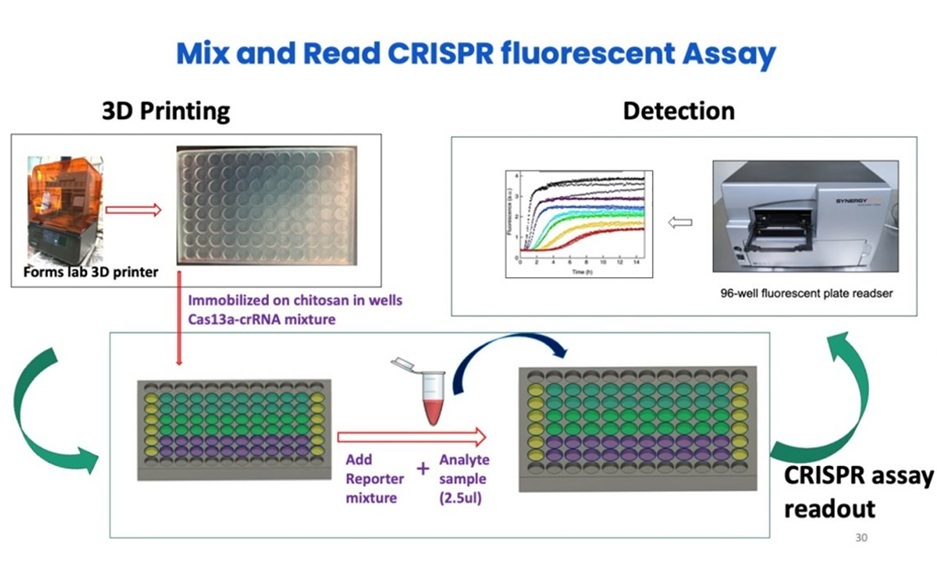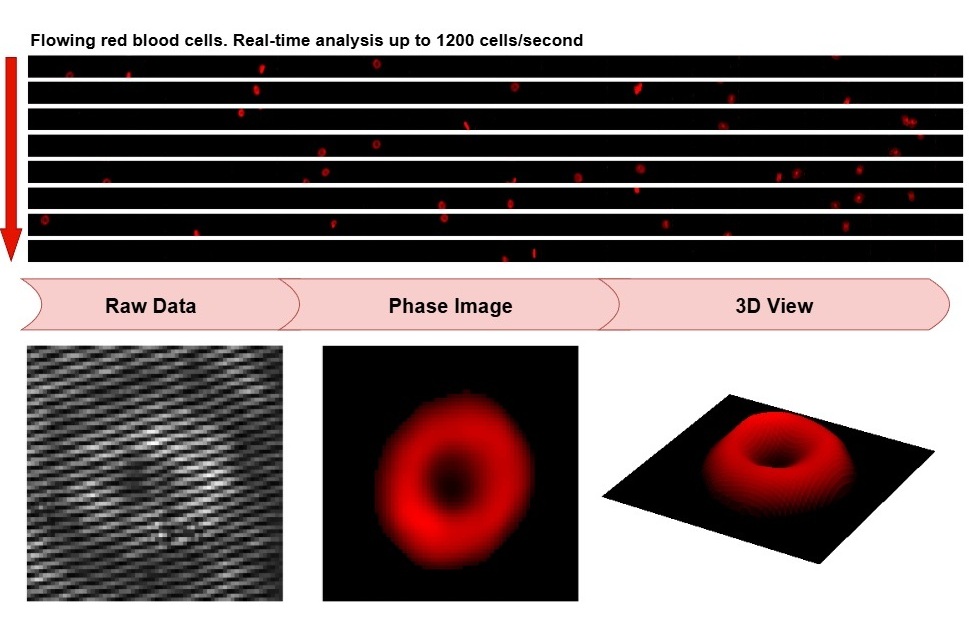Multiplex PCR Panel Evaluated for Diagnosis of Pneumonia
|
By LabMedica International staff writers Posted on 28 Jan 2021 |
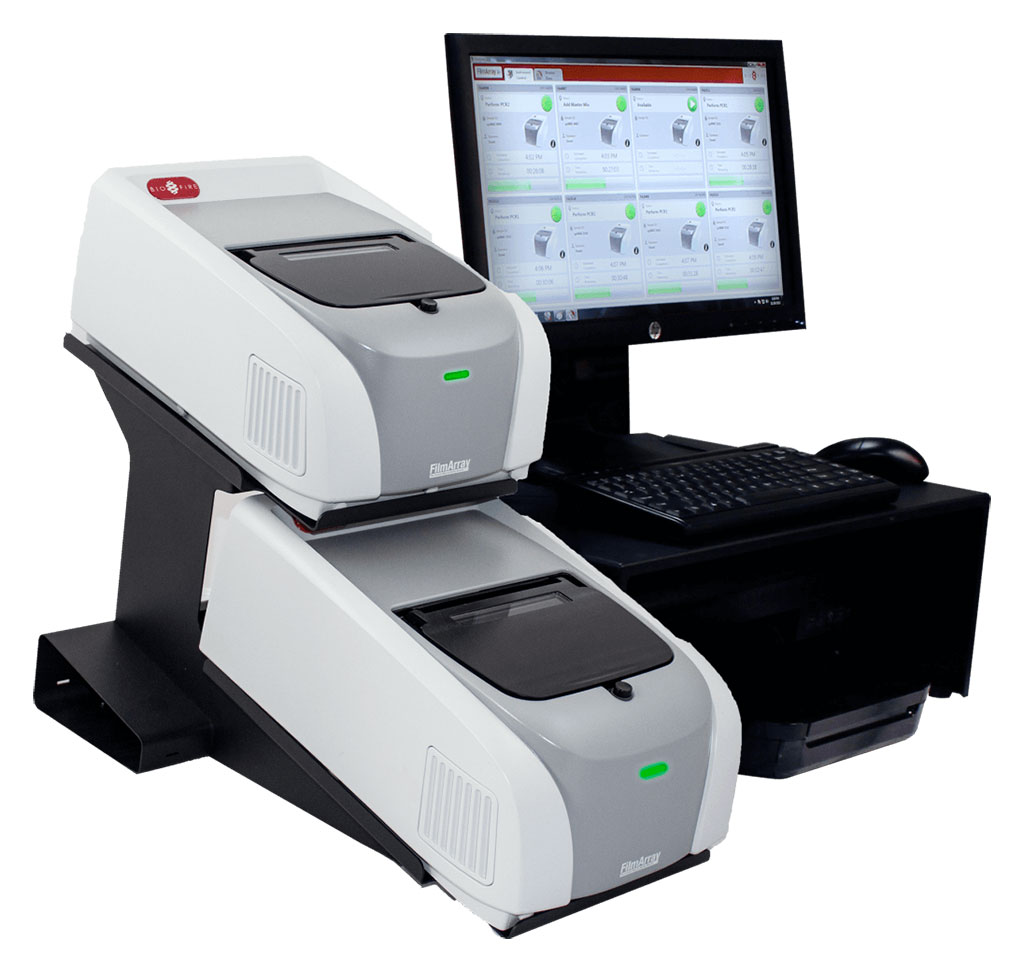
Image: The BioFire FilmArray 2.0 System set the standard for in-house molecular infectious disease testing. It enables simplified test ordering, faster turnaround times, and optimized laboratory workflow (Photo courtesy of BioFire Diagnostics).
Population based studies in the USA estimate the incidence of community-acquired pneumonia at 250 cases per 100,000 residents/year. At any given time, 1% of hospitalized patients receive treatment for hospital-acquired pneumonia, rendering pneumonia the most common healthcare-associated infection.
Despite potential benefits of achieving a microbiological diagnosis of pneumonia, including identifying resistant pathogens and decreasing antimicrobial utilization, a number of factors limit the value of traditional diagnostics in clinical practice. Guidelines emphasize the need for rapid, cost-effective and accurate diagnostic tests for pneumonia.
Infectious Disease Specialists at the New York University Grossman School of Medicine (New York, NY, USA) prospectively examined sputum specimens submitted to the microbiology laboratory for bacterial culture. From 5/2019 to 1/2020, the list of submitted specimens was reviewed twice daily. Expectorated, induced and tracheal aspirate specimens were considered for inclusion. The pneumonia panel was performed on high-quality sputum specimens and the results were prospectively compared with sputum cultures and other tests performed per standard of care.
The BioFire FilmArray Pneumonia Panel (BioFire Diagnostics, Salt Lake City, UT, USA) was run within 24 hours of patient selection. A cutoff of ≥105 copies/mL was applied for semiquantitative bacterial assays. The panel detects semi-quantitatively 15 bacterial agents to assist with differentiation between colonization and true infection, and qualitatively three atypical bacterial and eight viral agents. Antimicrobial resistance genes including the methicillin resistance genes mecA/C and MREJ, the carbapenemases KPC, NDM, Oxa-48-like, VIM, IMP and the extended spectrum Beta-lactamase CTX-M are also detected.
The scientists reported that 70 patients were included, 69 of whom completed a 5-day antimicrobial course for pneumonia and 14.3% died during hospitalization. There was a trend of higher rate of microbiologic diagnosis among the patients with culture submitted before antimicrobial administration (9/15 versus 20/55). The panel increased the microbiologic diagnosis from 29/70 to 59/70 patients. The per isolate analysis revealed an increase in the isolation of Haemophilus influenzae and Streptococcus pneumoniae. On review of empiric antimicrobials, there was potential for antimicrobial optimization in 56/70 patients, including nine bacteria among nine patients, not covered by empiric treatment and another 70 antimicrobials in 49 patients that could have been stopped.
The authors observed a significant increase in the rate of microbiologic diagnosis among adult patients hospitalized with pneumonia where the pneumonia panel was used in addition to current standard of care diagnostic methods, together with abundant opportunities for optimization of antimicrobial therapy. The study was published on January 9, 2021 in the International Journal of Infectious Diseases.
Related Links:
New York University Grossman School of Medicine
BioFire Diagnostics
Despite potential benefits of achieving a microbiological diagnosis of pneumonia, including identifying resistant pathogens and decreasing antimicrobial utilization, a number of factors limit the value of traditional diagnostics in clinical practice. Guidelines emphasize the need for rapid, cost-effective and accurate diagnostic tests for pneumonia.
Infectious Disease Specialists at the New York University Grossman School of Medicine (New York, NY, USA) prospectively examined sputum specimens submitted to the microbiology laboratory for bacterial culture. From 5/2019 to 1/2020, the list of submitted specimens was reviewed twice daily. Expectorated, induced and tracheal aspirate specimens were considered for inclusion. The pneumonia panel was performed on high-quality sputum specimens and the results were prospectively compared with sputum cultures and other tests performed per standard of care.
The BioFire FilmArray Pneumonia Panel (BioFire Diagnostics, Salt Lake City, UT, USA) was run within 24 hours of patient selection. A cutoff of ≥105 copies/mL was applied for semiquantitative bacterial assays. The panel detects semi-quantitatively 15 bacterial agents to assist with differentiation between colonization and true infection, and qualitatively three atypical bacterial and eight viral agents. Antimicrobial resistance genes including the methicillin resistance genes mecA/C and MREJ, the carbapenemases KPC, NDM, Oxa-48-like, VIM, IMP and the extended spectrum Beta-lactamase CTX-M are also detected.
The scientists reported that 70 patients were included, 69 of whom completed a 5-day antimicrobial course for pneumonia and 14.3% died during hospitalization. There was a trend of higher rate of microbiologic diagnosis among the patients with culture submitted before antimicrobial administration (9/15 versus 20/55). The panel increased the microbiologic diagnosis from 29/70 to 59/70 patients. The per isolate analysis revealed an increase in the isolation of Haemophilus influenzae and Streptococcus pneumoniae. On review of empiric antimicrobials, there was potential for antimicrobial optimization in 56/70 patients, including nine bacteria among nine patients, not covered by empiric treatment and another 70 antimicrobials in 49 patients that could have been stopped.
The authors observed a significant increase in the rate of microbiologic diagnosis among adult patients hospitalized with pneumonia where the pneumonia panel was used in addition to current standard of care diagnostic methods, together with abundant opportunities for optimization of antimicrobial therapy. The study was published on January 9, 2021 in the International Journal of Infectious Diseases.
Related Links:
New York University Grossman School of Medicine
BioFire Diagnostics
Latest Microbiology News
- High-Throughput Enteric Panels Detect Multiple GI Bacterial Infections from Single Stool Swab Sample
- Fast Noninvasive Bedside Test Uses Sugar Fingerprint to Detect Fungal Infections
- Rapid Sepsis Diagnostic Device to Enable Personalized Critical Care for ICU Patients
- Microfluidic Platform Assesses Neutrophil Function in Sepsis Patients
- New Diagnostic Method Confirms Sepsis Infections Earlier
- New Markers Could Predict Risk of Severe Chlamydia Infection
- Portable Spectroscopy Rapidly and Noninvasively Detects Bacterial Species in Vaginal Fluid
- CRISPR-Based Saliva Test Detects Tuberculosis Directly from Sputum
- Urine-Based Assay Diagnoses Common Lung Infection in Immunocompromised People
- Saliva Test Detects Implant-Related Microbial Risks
- New Platform Leverages AI and Quantum Computing to Predict Salmonella Antimicrobial Resistance
- Early Detection of Gut Microbiota Metabolite Linked to Atherosclerosis Could Revolutionize Diagnosis
- Viral Load Tests Can Help Predict Mpox Severity
- Gut Microbiota Analysis Enables Early and Non-Invasive Detection of Gestational Diabetes
- Credit Card-Sized Test Boosts TB Detection in HIV Hotspots
- Fecal Metabolite Profiling Predicts Mortality in Critically Ill Patients
Channels
Clinical Chemistry
view channel
VOCs Show Promise for Early Multi-Cancer Detection
Early cancer detection is critical to improving survival rates, but most current screening methods focus on individual cancer types and often involve invasive procedures. This makes it difficult to identify... Read more
Portable Raman Spectroscopy Offers Cost-Effective Kidney Disease Diagnosis at POC
Kidney disease is typically diagnosed through blood or urine tests, often when patients present with symptoms such as blood in urine, shortness of breath, or weight loss. While these tests are common,... Read moreMolecular Diagnostics
view channel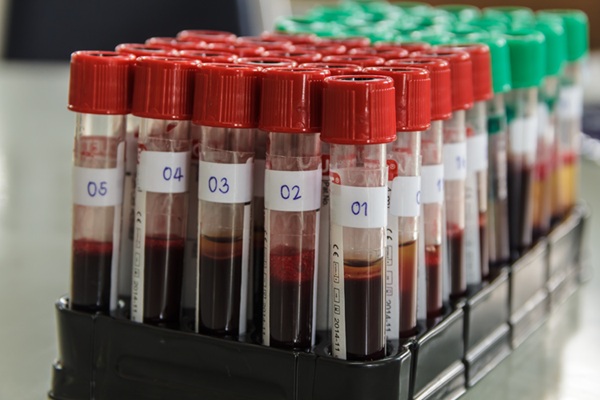
Dual Blood Biomarkers Improve ALS Diagnostic Accuracy
Diagnosing amyotrophic lateral sclerosis (ALS) remains difficult even with advanced imaging and genetic tools, especially when clinicians must distinguish it from other neurodegenerative conditions that... Read more
Automated Test Distinguishes Dengue from Acute Fever-Causing Illnesses In 18 Minutes
Dengue fever remains the most common mosquito-borne viral infection worldwide, posing a major public health challenge as global cases continue to surge. In 2024 alone, more than 14.6 million infections... Read moreHematology
view channel
ADLM’s New Coagulation Testing Guidance to Improve Care for Patients on Blood Thinners
Direct oral anticoagulants (DOACs) are one of the most common types of blood thinners. Patients take them to prevent a host of complications that could arise from blood clotting, including stroke, deep... Read more
Viscoelastic Testing Could Improve Treatment of Maternal Hemorrhage
Postpartum hemorrhage, severe bleeding after childbirth, remains one of the leading causes of maternal mortality worldwide, yet many of these deaths are preventable. Standard care can be hindered by delays... Read more
Pioneering Model Measures Radiation Exposure in Blood for Precise Cancer Treatments
Scientists have long focused on protecting organs near tumors during radiotherapy, but blood — a vital, circulating tissue — has largely been excluded from dose calculations. Each blood cell passing through... Read moreImmunology
view channel
Chip Captures Cancer Cells from Blood to Help Select Right Breast Cancer Treatment
Ductal carcinoma in situ (DCIS) accounts for about a quarter of all breast cancer cases and generally carries a good prognosis. This non-invasive form of the disease may or may not become life-threatening.... Read more
Blood-Based Liquid Biopsy Model Analyzes Immunotherapy Effectiveness
Immunotherapy has revolutionized cancer care by harnessing the immune system to fight tumors, yet predicting who will benefit remains a major challenge. Many patients undergo costly and taxing treatment... Read morePathology
view channel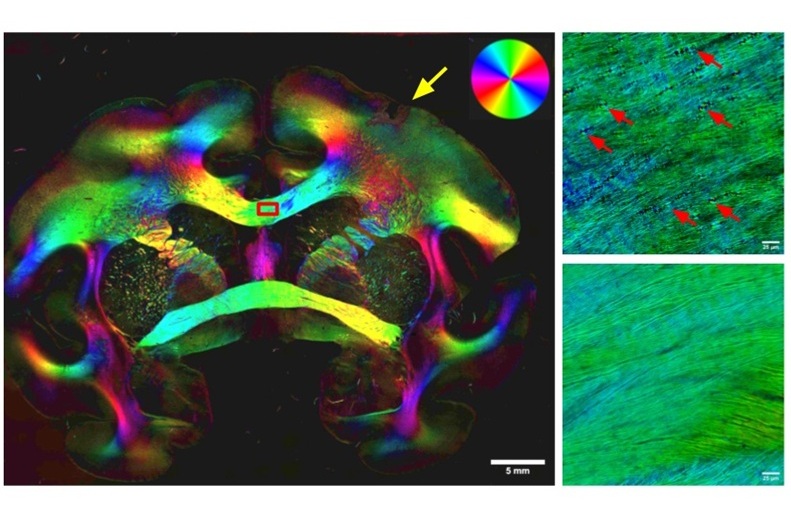
Highly Sensitive Imaging Technique Detects Myelin Damage
Damage to myelin—the insulating layer that helps brain cells function efficiently—is a hallmark of many neurodegenerative diseases, age-related decline, and traumatic injuries. However, studying this damage... Read more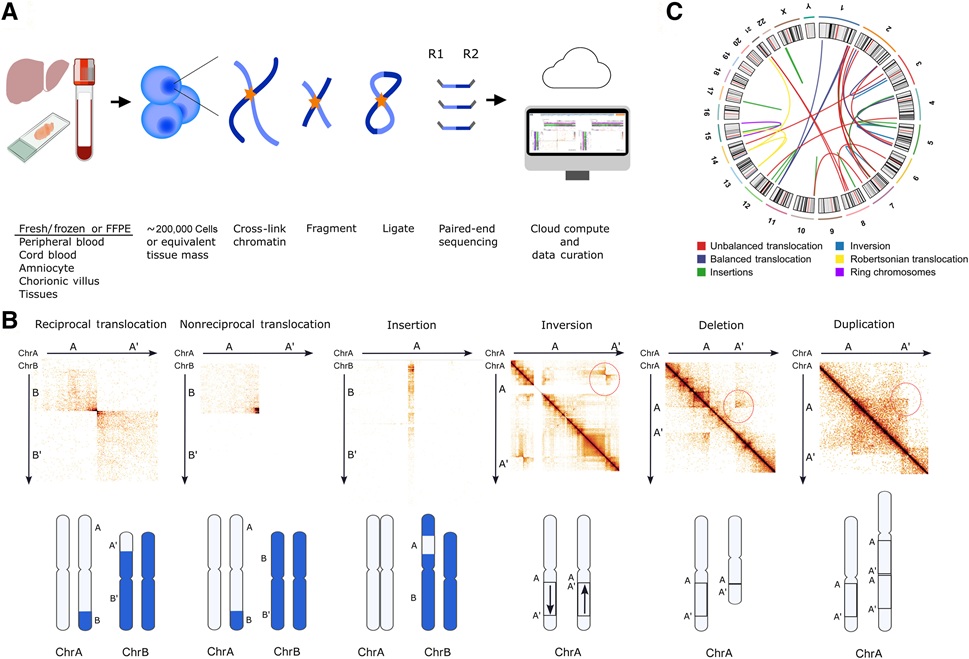
3D Genome Mapping Tool to Improve Diagnosis and Treatment of Genetic Diseases
Standard laboratory tests often fail to detect complex DNA rearrangements that underlie many genetic diseases. To bridge this diagnostic gap, researchers have developed a 3D chromosome mapping method that... Read more
New Molecular Analysis Tool to Improve Disease Diagnosis
Accurately distinguishing between similar biomolecules such as proteins is vital for biomedical research and diagnostics, yet existing analytical tools often fail to detect subtle structural or compositional... Read more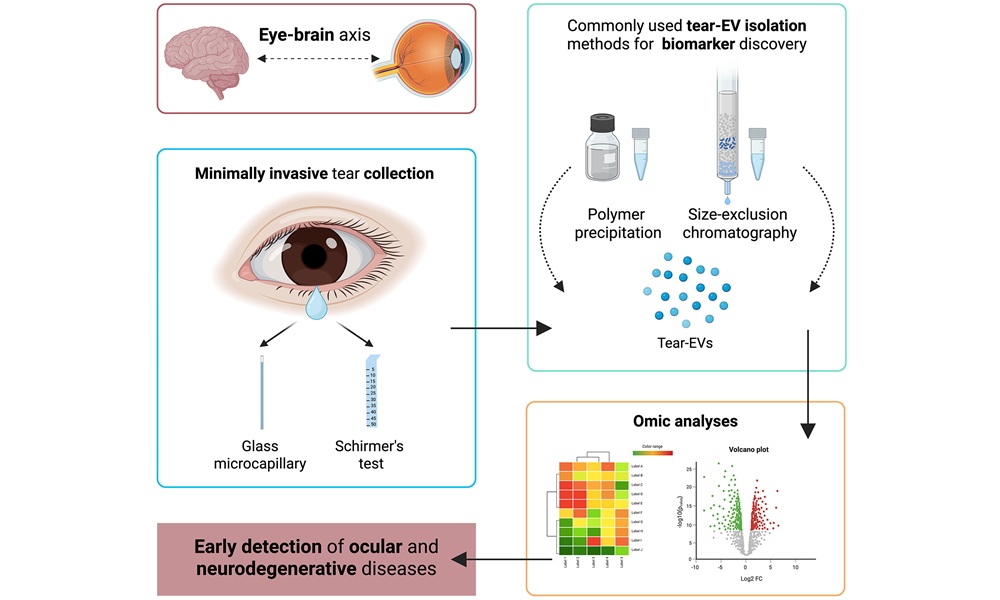
Tears Offer Noninvasive Alternative for Diagnosing Neurodegenerative Diseases
Diagnosing and monitoring eye and neurodegenerative diseases often requires invasive procedures to access ocular fluids. Ocular fluids like aqueous humor and vitreous humor contain valuable molecular information... Read moreTechnology
view channel
Portable Biosensor Diagnoses Psychiatric Disorders Using Saliva Samples
Early diagnosis of psychiatric disorders such as depression, schizophrenia, and bipolar disorder remains one of medicine’s most pressing challenges. Current diagnostic methods rely heavily on clinical... Read more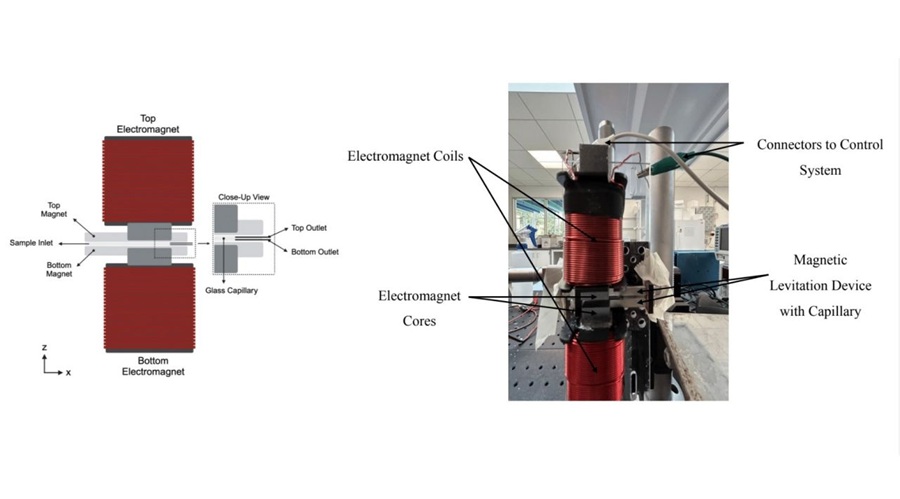
Cell-Sorting Device Uses Electromagnetic Levitation to Precisely Direct Cell Movement
Sorting different cell types—such as cancerous versus healthy or live versus dead cells—is a critical task in biology and medicine. However, conventional methods often require labeling, chemical exposure,... Read moreIndustry
view channel
Co-Diagnostics Forms New Business Unit to Develop AI-Powered Diagnostics
Co-Diagnostics, Inc. (Salt Lake City, UT, USA) has formed a new artificial intelligence (AI) business unit to integrate the company's existing and planned AI applications into its Co-Dx Primer Ai platform.... Read more













